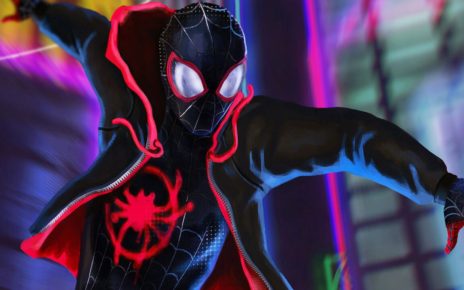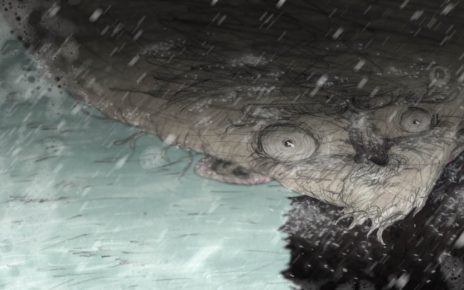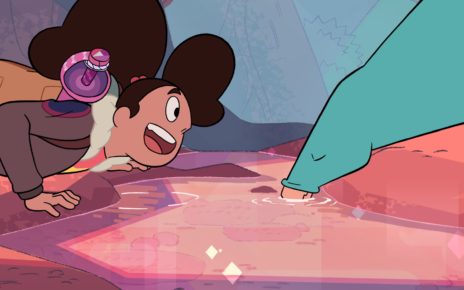Independent animation studio Cartoon’s Saloon’s The Breadwinner is the story of a young girl living in Taliban-controlled Afghanistan who dresses as a boy to feed her family. Based on Deborah Ellis’ 2000 book of the same name, Cartoon Saloon pulled together a creative team from all over the world to create the animated adaptation. With its beautiful visuals, strong characters, and sensitive portrayal of Afghan culture, the film quickly drew the acclaim of critics and audiences alike, winning both the Jury and Audience awards at Annécy International Animation Festival, as well as an Oscar nomination for best animated feature.
The Dot and Line reached out to director Nora Twomey, one of the founding members of Cartoon Saloon and co-director of its first feature, The Secret of Kells. She talked to us about the painstaking process of bringing The Breadwinner to life, the film’s stellar reception, and why the story remains relevant 20 years later.
The Breadwinner was in production for five years or more, is that right?
Well, I mean, five years took us from reading the book and looking at Deborah Ellis’ first rough draft of the screenplay all the way through to our final sound mix. That took about five years. In that time, we financed the whole film, et cetera, so we wouldn’t have been working on it solidly for that length of time, but it was always there for that five years. The actual production, from the finish of of rough storyboards through to the end of animation was about 18 months.
Wow, a long time.
Yeah, and you start with a release date, right? So you have your funders in place and you have your release date, but then you know getting all the little bits and pieces of finance together, getting all of the elements in place always takes longer than you expect so you actually always end up with less time than you expected to actually make the film. So it can be a lot of pressure, or you can have too many departments starting at once…But it’s all part and parcel of making animated films.
“If your crew as individuals have a sense of ownership on the work that they do, then they bring so much more to the film.”

What are the most important things to bring to an animated film production as a director?
You absolutely need a clear vision. You really need to identify with something or someone in your story and hang onto that. You have to have a love for the subject matter, a love for your characters, and that’ll see you all the way through to the end of the whole thing. That gives you a confidence and it gives you a clarity of vision. But it also allows you to allow your crew a certain amount of freedom. I would never agree with the idea of the ‘auteur’ kind of director, like where it’s one person’s vision, and everybody else has to act as if they were the hand of that director. I love discovering the skills and talents and ambitions of the people that I work with and then helping them and encouraging them to use those talents in a way that furthers the story as it’s set out and make sure that it all aligns in a way that nothing contradicts itself in the film. So that’s something in and of itself, and for me it was a revelation, and it was something I knew, of course from Kells and working as head of story on some of the scenes, but working on the Breadwinner is where I really felt that. If your crew as individuals have a sense of ownership on the work that they do, then they bring so much more to the film. When they go home they’re thinking about it, they’re thinking of ways to make it better, and they trust you as a director. So no energy is wasted.
Were there any moments during the process that were particularly difficult— or, conversely, that you look back on with the most pride?
When I started researching the subject matter—the history of Afghanistan—and started talking to Afghan people and getting different perspectives on what’s going on there today, what was going on at the time, what was going on a couple of decades before, and hundreds of years before, and thousands of years before, I was absolutely overwhelmed. I almost lost sight of the story that I was trying to tell, because I felt that I couldn’t say anything, that I didn’t have answers. I had just questions. But then, I suppose I realized that the whole film is a question. It’s not there to answer what should happen to Afghanistan, what should happen to the people of Afghanistan, what the future holds or anything like that. If you ask any two people from the region, you’ll probably get a different answer. For me, I had to simplify right down to [the main character] Parvana’s experience. The experience of a child, and how she gets through her days, I guess. And to do that as empathetically as I possibly could, I had to have an empathy for Parvana, of course, but [also] for every single character in the film.
It’s a very character-driven film.
Well, absolutely. But even the ones you could consider, you know, dark or, in terms of you know their motivations and that, I really did try to understand where they were coming from, I very much read up and, again, tried to discuss it with as many Afghan people as I could—what life is like and the type of decisions people have to make. Once you have a family that changes everything. When you put yourself in that position of somebody who is pushed to the edge, then what do you do? You find yourself having an empathy that you never thought you would have, really.
Do you have a favorite character?
Well, Parvana. I love the way that Parvana comes across in the film because I think in one way it could come across that she had no agency of her own, or that she was somebody who only had things happen to her and she just had to survive. But Parvana is a very strong-willed person! You know? And you can see the hope that she carries with her in her eyes and in what she does in this film. And it’s not superhero stuff, it’s not outlandishly silly in terms of what one young girl can achieve in a situation like that, but you feel that hope. I love the performance that Saara Chaudry brought to the character of Parvana, but the thing is it’s very difficult for me to point out one particular performance or department or particular time [in] the making of the film, because everything was built on top of everything else.
Yeah, it all fits together.
We worked on top of Deborah Ellis’ book, with Anita Doron the screenwriter and it just kept building…It’s the sum of all its parts and it has many, many parts.
“At 12 drawings per second, your emotions feel a little bit more like they’re being cared for.”
So you adapted The Breadwinner from a novel. Do you think there’s anything about animation that makes it uniquely suited to portraying and discussing difficult subject matter, such as gendered violence?
I’m a huge fan of films like Grave of the Fireflies, Waltz with Bashir. There are lots of [animated] films out there that explore difficult subject matter or something quite complex. I love the idea that animation [doesn’t] have to be a babysitter for very young children. You can use it to explore all different types of subject matter. There is…when you animate something, especially when you use hand drawn lines, the empathy that an artist has in their hand when they’re portraying a face, you know? At 12 drawings per second, your emotions feel a little bit more like they’re being cared for. I think that we don’t get as emotionally fatigued watching an animated version of Parvana go through a beautifully rendered understanding of Kabul rather than a live-action one. Certainly I, as a viewer, would pull away emotionally much faster if I saw a live-action girl go through the things Parvana does. We implied a lot of the violence in the film rather than show it explicitly in ways that can be more impactful and more powerful, especially for adult audiences. Children and older children who go to see this film tend to look at it from Parvana’s perspective, but adults tend to take with them into the cinema everything that they have heard in the news over the last couple of decades. They have that kind of tension with them so they have a different experience.
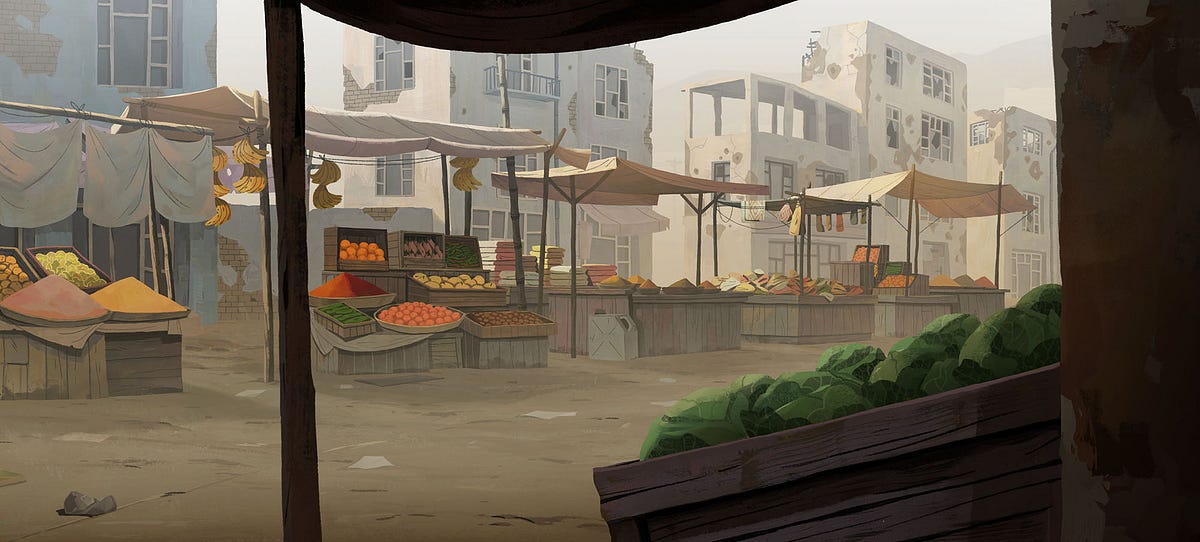
When I watched the film, there were many scenes which resonated with me very viscerally, and felt extremely topical. It’s been nearly 20 years since The Breadwinner novel was published. Why did you think this film was timely?
In many ways, I wish it wasn’t relevant! That there were things that we’d have gotten over in terms of inequality and the way that women are treated in this world and again in the nature of conflict. But it’s as relevant today, and I think will continue to be. Whether it’s young girls, or children growing up at times of war. They never go away and in ways they seem like they get worse. For me, though, working on a film like The Breadwinner, gives me hope. The entire project and the entire film is about hope. Our ability to change, our ability to empathize and understand the suffering of others, our ability to not just take at face value what we’re being told but to really dig down and search out the truth. For me it was an eye-opener to find out where the Taliban came from, where that particular strain of Islam came from. I could see how implicated we [in] the West are. In terms of what’s going on today in Afghanistan and what has gone on for decades now. None of this is simple. but having a film there that older children can go and see and adults can go and see — but especially older children. For me as a mother, making a film where children can be introduced to some of the harsher realities of life, in a thoughtful way, is something that I’m very proud to have been part of.
Yes, some of the themes of the film are very universal and I think they would appeal at any time. On the topic of both themes and aesthetics, Cartoon Saloon has drawn very specifically on its Irish roots in previous films and shows, but you really broke new ground here. Was that difficult? And what is the future direction of the studio?
Some people draw a lot of parallels between Breadwinner and the previous works and a lot of people draw a lot of distinctions! For me, going into the Breadwinner, I really didn’t want to put art direction between the audience and the characters. I wanted to make sure that the audience found the film to be incredibly accessible, that they felt that they were being pulled in, and I wanted it to be. The type of film that after five or 10 minutes that you’d forget that it was animated, you know? And it’s funny that some people say this to me like it’s a compliment or something? (Laughs.) “I don’t like animation but I forgot that it was animated.” A lot of people have that they, they use the phrase “Mickey Mouse,” something is “Mickey Mouse,” as a derogatory term. People don’t understand the power of the medium.
For The Breadwinner we wanted the performances to be quite subtle, we didn’t want to have the [art] composition play quite such a forceful role in the film, because to do that would introduce an element of destiny to the whole thing, which would be been completely out of place in The Breadwinner. So this film looked like what Parvana needed it to be, and we let her face be the center of this entire film, so that she didn’t need to verbally express herself all the time. After a few minutes we began to become in sync with her and understand her thought process and what was going on in behind those incredible eyes.
For me that was quite important. I worked with two art directors, Reza Riahi and Ciaran Duffy, who have very different styles. But they worked together on the film with so many incredible designers to try to make the film what it needed to be in order for the characters to express the story in as evocative and immersive a way as we possibly could.
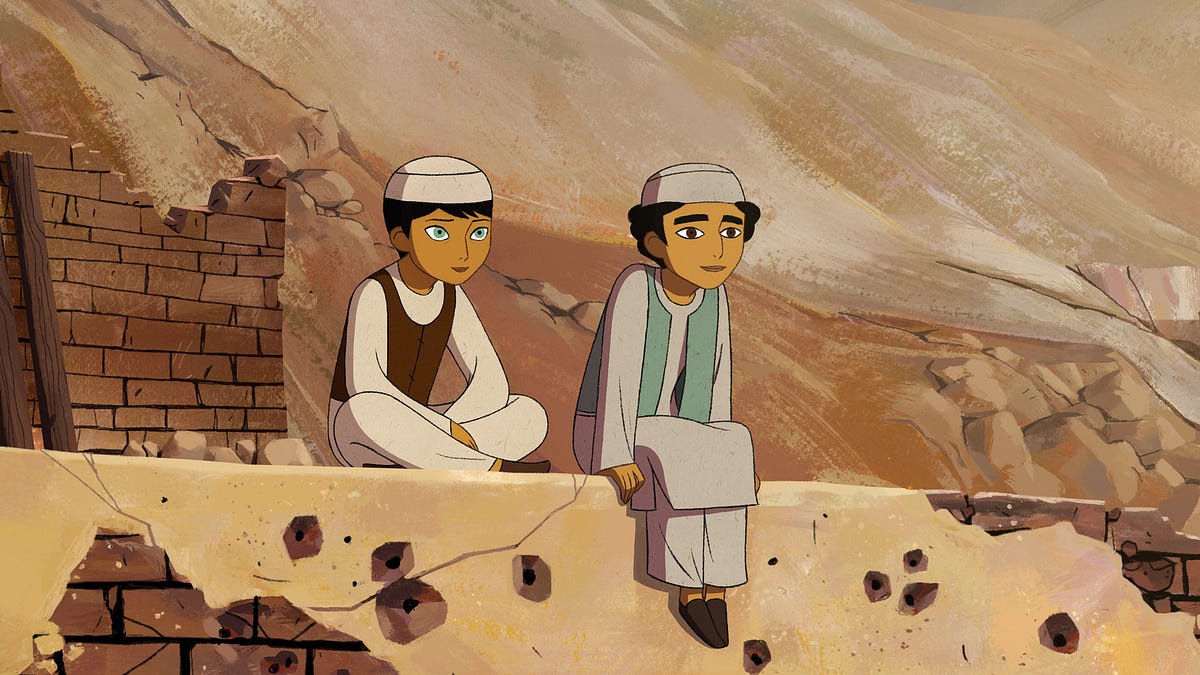
I loved the more stylized paper sections of the film. Not actual paper cutting, but that was the effect…
Yes. It was quite intentional to make a style for Parvana’s imagination that really contrasted with the subtlety of the real world of Kabul. We wanted to show the colors of Afghanistan, the rich cultural history, the limitlessness of her imagination. All of this kind of came across in that story that she tells, initially to try to soothe her younger brother and as a connection with her father, and then it becomes something much deeper. The power of story as a healing tool.
And a way of connecting with cultural history, too. Has the film been screened at all in the Middle East, and if so, what has the reception been?
It’s been screened in South Asia, in Afghanistan and dubbed into Dari and was shown on Total TV, and it’s going to be broadcast in Pashto as well. Dari and Pashto are the two national languages of Afghanistan, so I’m delighted it’s made it to screens there. The cinema isn’t such a big thing at the moment in Afghanistan, so it’s much better to let it broadcast on TV. We were really delighted to have a partnership with the Moby group in Afghanistan who have broadcast the the film. We worked with the Nahid Women’s Choir of Afghanistan, the National Institute of Music in Kabul, last summer, with Mychael and Jeff Danna to create the score of the film. We were always trying to make the film as international and universal as we possibly could and not just have it come from one place.
On that note, congratulations on your Annécy wins. Has there been any particular aspect of the film’s warm reception which has been a highlight for you?
I got to sit in Washington, DC, with the First Lady of Afghanistan, Rula Ghani, and a young woman who had dressed as a boy in Afghanistan during the Taliban era to accompany her sister to a secret school. The same woman eventually went to the United States and got a third-level education and then went back to Afghanistan [to] set up a school and a program called SOLA there—which encourages young women who want to go forward into business studies. That was a huge moment for me. Being able to watch a film in such amazing company as that. But the great thing to me, you know, is I have different experiences depending on wherever, whatever part of the world I am, or what the age the group of people are. I saw it with Chinese audiences, my producer has seen it with Russian audiences, so with the history with Afghanistan it can be particularly impactful…That’s the huge power of cinema: it ceases to be the director’s or the team’s that made it. It becomes something else again entirely.
“Telling stories is our priority. And it continues to be, whatever way we manage to fund our films.”
I suppose that’s the power of independent animation in particular, to tell these unique stories. What is next for you and for Cartoon Saloon?
What I love about Song of the Sea and Secret of Kells and the Breadwinner and Wolfwalkers now, which is in production at the moment with Tomm Moore and Ross Murray at the studio here, in [some] ways it can never compete with the big blockbuster, the huge studios. But in other ways we have a tremendous freedom for films…. We can tell stories that don’t necessarily have to sell toys at Christmas time or anything like that. Stories that have a different function. Telling stories is our priority. And it continues to be, whatever way we manage to fund our films, whatever way we manage to get them out there in front of audiences, the heart of it has always been just a group of friends wanting to tell stories and draw pictures together.
Thanks for reading The Dot and Line, where we talk about animation of all kinds. Don’t forget to follow us on Twitter and sign up for our newsletter.



